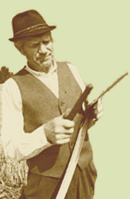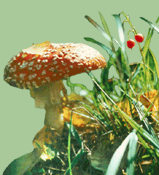The eager Otter
Nikolai Laanetu gives a detailed overview of this large stout, including its way of life and habits in Estonia. Unlike in many other European countries, the Otter feels well here. This animal is very quick and mobile, fit for life in water as well as on land. It is also a very attentive animal, being difficult for the researcher to observe and study. The feature story is provided with different graphs regarding the life of otters, as well as numerous photos of the animal and its traces. The main reason behind the decline of otters is human activity. They get killed in fish and beaver traps, but are also influenced by drainage, pollution and alien species.
Cyclones warm up the winters
Mait Sepp and Jaak Jaagus introduce one of the most important factors influencing our climate cyclones. They seek to answer the question if the rise in the frequency of cyclones may indicate the warming of climate. The article presents the results of a study that attempted to count all the cyclones in the region. It turned out that the number of cyclones has grown from about 6 cyclones in a winter in 1948 to about 10 in 2000. The cyclones tend to move north, so instead of cold arctic cyclones we get more warm cyclones from the South.
Alvars owe their existence to time
Aveliina Helm and Meelis Pärtel explain how the current species richness of our alvars is the heritage of past times: the future of nowadays fragmented alvars does not look very promising. Despite of the limited geographical distribution, the species richness of alvars is remarkable (49 vascular species per square meter). The decline in the area of alvars (70% in last 50 years) as well as fragmentation of the habitats are the main reasons for the decrease in species richness. Therefore it is very important to protect all remaining alvars and if possible, to support the distribution of species from one alvar to another.
Rukola Rocket salad has an Estonian name as well
Urmas Kokassaar introduces an annual plant that grows as a foreign species in Estonia, but can often be seen in food stores as a kitchen herb. Leaves are the most commonly consumed parts of the Rocket. The leaves have a peppery, a bit bitter taste. Rocket salad is very common in the Mediterranean cuisine. In Estonia, the plant can be grown in a pot or in open gardens.
Age Valley protected area
Anneli Palo writes about a Natura 2000 site in the Tartu County. The little-known valley on the Mõra River and Age Creek is rather spectacular, with numerous sandstone denudations and several side valleys.
European rarities in Estonia: Lopinga achine
Mati Martin warns: this butterfly, rare already in Europe, might become endangered also in Estonia, if the number of suitable habitats, such as wooded meadows and forest meadows decline further. The butterfly prefers old forest habitats and forest edges.
Estonian Nature enquires
Helen Arusoo writes about the difference between the old journal Loodus and the new one Loodusesõber (Nature Friend).
Marek Sammul gives an overview of the activities of the Estonian Naturalists Society over the past three years.
Interview: You cant play around with lakes
Toomas Kukk has interviewed Ingmar Ott, a lake scientist, the winner for 2007 State Science Award.
Hiking trail: Tõlinõmme, a quaking landscape on limestone plateau. A hike on landscape with no trail.
Kaido Einama takes the reader to an oasis close to Tallinn, a place particularly fit for a winter hike, since the mire landscape is mostly too wet in other seasons. The Tõlinõmme bog is situated near Vääna, at the Vääna Landscape Protection Area. Tõlinõmme Lake, located next to the bog, was once a large lake, but was drained in 1938 and is now a small waterbody surrounded by reed beds. The local government is currently planning to build a hiking trail to the already existing bird-watch tower.
Know the Black-Headed Gull? Sure!
Sven Zaèek presents the Black-Headed Gull, probably one of the best-known members of the Gull family, and especially its eating habits. These birds are very social and therefore nest in big colonies. They are not afraid of humans, so taking pictures is pretty much a piece of cake.
Essay: The floods on the floodplain protect the town by Kalevi Kull
The surprising Larch surprise
Harri Paves is amazed by the article by Heldur Sander and Alar Läänelaid (see October 2006), but has to admit that the final truth about the history of larches in Estonia could only be revealed by a DNA-study.
| 

![[IN ENGLISH]](images/gb.gif)





